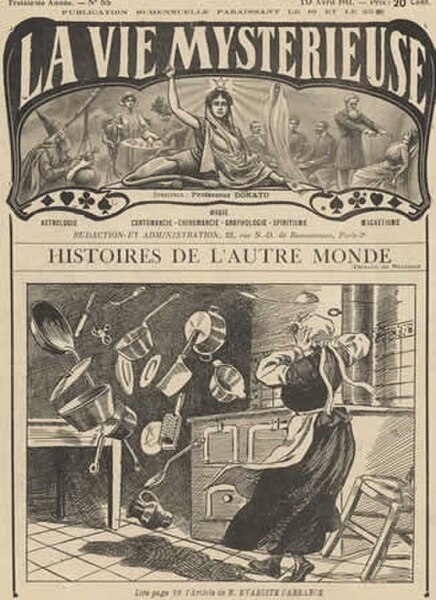In German folklore and ghostlore, a poltergeist is a type of ghost or spirit that is responsible for physical disturbances, such as loud noises and objects being moved or destroyed. Most claims or fictional descriptions of poltergeists show them as being capable of pinching, biting, hitting, and tripping people. They are also depicted as capable of the movement or levitation of objects such as furniture and cutlery, or noises such as knocking on doors. Foul smells are also associated with poltergeist occurrences, as well as spontaneous fires and different electrical issues such as flickering lights.
Artist conception of poltergeist activity claimed by Thérèse Selles, a 14-year-old domestic servant of the Todescini family at Cheragas, Algeria. From the French magazine La Vie Mystérieuse in 1911.
German folklore is the folk tradition which has developed in Germany over a number of centuries. Seeing as Germany was divided into numerous polities for most of its history, this term might both refer to the folklore of Germany proper and of all German-speaking countries, this wider definition including folklore of Austria and Liechtenstein as well as the German-speaking parts of Switzerland, Luxembourg, Belgium, and Italy.
Illustration of Hansel and Gretel, a well-known German folktale from the Brothers Grimm, by Arthur Rackham, 1909


